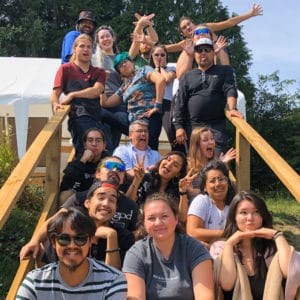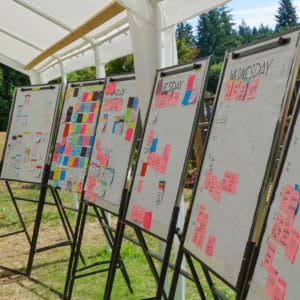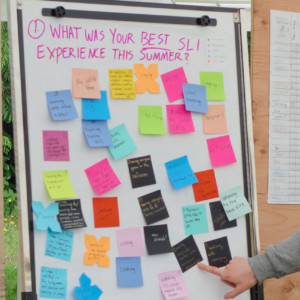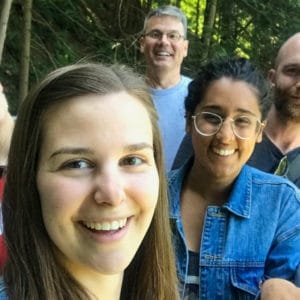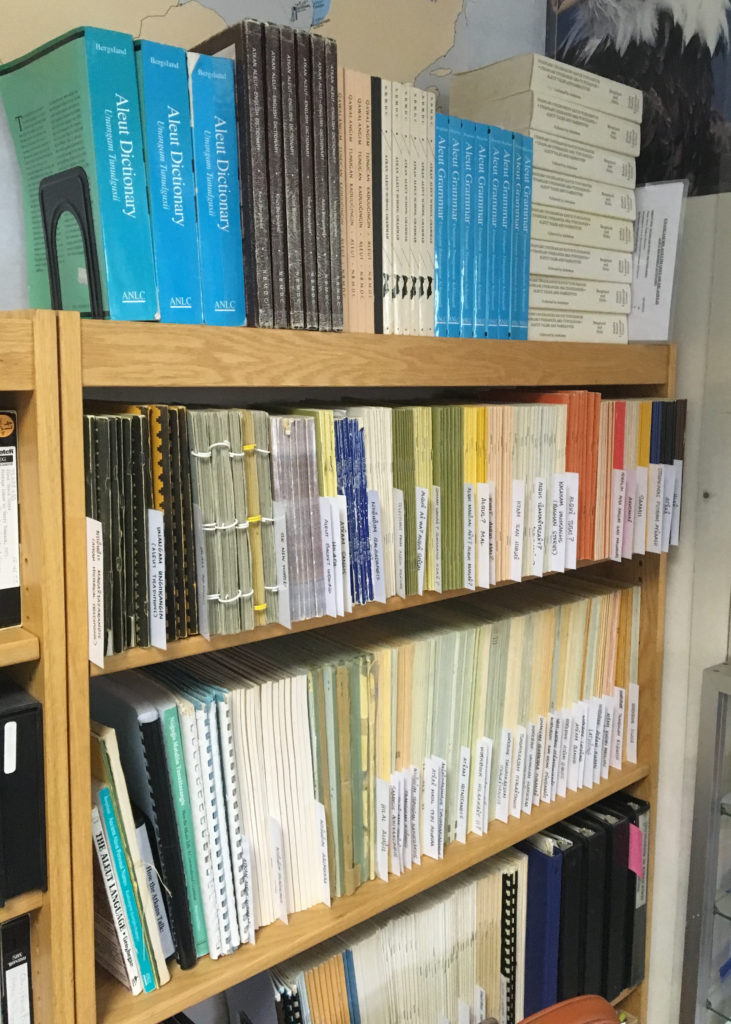
What does it mean to revitalize a language? What does it mean to secure its existence for the next generation of speakers? What does this look like and why is it important? As a Native person who is deeply concerned about the future of my heritage language, Tewa, these are the types of questions I ponder on a regular basis. Today, the dominant language among Pueblo people in New Mexico is English, but it wasn’t all too long ago that the Pueblo languages themselves – Tewa, Tiwa, Towa, Keres, and Zuni – held this position within their respective communities. Although its impact has been devastatingly profound, the process of colonization and the resulting language shift it has created makes up for only a sliver of the overall expanse of time that Pueblo people have been speaking their own languages.
For someone born in the twentieth century, this can be a difficult thing to put into perspective. All I’ve ever known is what I’ve been exposed to and what I’ve experienced. Just like my parents, English was my first language. It’s everywhere, while the heritage language no longer is (hence the need for such things as immersive listening CDs/playlists!). In essence, English is the unofficial official language of the United States. The fact that Native peoples only make up roughly one percent of the overall population of the country (a direct result of colonization) means that we are, for better or worse, constantly inundated by dominant (i.e., non-indigenous) culture and language in almost all aspects of our daily lives, making revitalization efforts especially difficult. Additionally, much of the what has caused Native languages to suffer was set into motion long before today’s generation of learners came into being. So, when we take part in efforts to revitalize our languages, we often turn to what we are familiar with, English and ways of thinking introduced to and imposed on us by dominant society.
One result of turning to English and dominant ways of thinking in an attempt to revitalize our languages is putting them on a metaphorical “shelf” for safe keeping. That is, putting them into a presentable package (e.g., a dictionary, a workbook, a mobile app) which, unlike a fluent speaker, has an indefinite “shelf” life. While documentation of endangered languages has proven to be essential to their survival in many cases, this aspect of the revitalization process is often one we get hung-up on. And it becomes even more problematic when such documentation is essentially a target-language-to-English translation type resource, attempting to make the heritage language circle fit into an English-thinking square. Additionally, such resources often attempt to deconstruct the target language in an effort to explain to the learner the ‘whys’ (i.e., why certain aspects of the language work the way they do), assuming that if the learner becomes familiar with them, they’ll then grasp the ‘hows’ (i.e., how those aspects work within various contexts), and, eventually, the ‘whens’ (i.e., when to say the right things in conversation with a fellow speaker). What often comes next is the belief that one can learn “enough” solely through interaction with such a shelf-stable resource, letting the aspect of regular interaction with a fluent speaker fall down on the list of language learning “to-dos” – “My language is now written down and tangible, therefore it is stable and safe.” Today’s manifestation of this is the creation of a language app for smartphones.
Such language resources can prove to be extremely helpful supplements in the process of language revitalization, but they can’t serve as the sole basis for it. As the WAYK saying goes, “It’s easier to talk ABOUT the language than it is to talk IN the language.” Language revitalization takes the time and commitment of a community (even as few as one learner and one speaker) coming together on a regular basis, speaking in the language, and staying in it for as long as possible. This is something that can’t be replicated through the interaction between a person and an inanimate object. WAYK shows learners how to overcome the urge and need to give in to the use of English and those resources that filter the target language through it. WAYK does this by giving them the tools to extract language from an actual fluent speaker in real-time – learning through (surprise!) doing. Further, language learning through the WAYK method doesn’t harp on the ‘whys’ of language, but instead, focuses efforts on the experience gained through person-to-person language exchange and interaction. You get the ‘whens’ from the beginning, allowing you to use what you’ve learned sooner. And when you learn the ‘whens’ of a language, you’ll grasp the ‘hows,’ allowing the ‘whys’ to fall into place when the time is right and independent of English influence (exciting stuff!).
So be sure to keep that language workbook and dictionary around, but don’t get too comfortable with their utility. Instead, head to a speaker’s house and get to hunting and pulling the language out of them instead. You’ll walk away with something that can’t be written down, or put on a shelf – a smile and even a hug from someone who is more irreplaceable than you might realize.
Post authored by Samuel.

